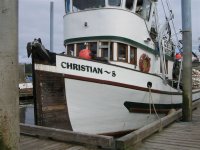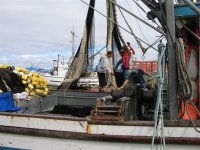colobear
New member
- Joined
- Jan 23, 2005
- Messages
- 2,154
- Reaction score
- 1
- C Dory Year
- 2006
- C Dory Model
- 22 Cruiser
OK Larry,
I'll give your devilish question a try. I know of nothing in the navrules specifically addressing three or more boats approaching/crossing/overtaking. (Undoubtedly you will now quote me annex xyz in rule 7 applicable when in restricted visibility on a Thursday!!) :lol: :lol: But...under the take all necessary and prudent steps to avoid a collision guideline, the "safe speed" guideline and the precedences of sail/power, overtaking/overtaken, and the avoid maneuvering to port if possible guideline. All vessels should slow to a safe speed, defer to the precedences regarding sail and crossing, use their VHF to declare intentions or inquire of the other vessels, possibly sound five blasts to get everybody's attention prior to radio communication. Prudent seamanship is the guide here.
Now, my question: When you look out the forward window and see those vessels, what is a quick way to check to see if you are on a collision course?
I'll give your devilish question a try. I know of nothing in the navrules specifically addressing three or more boats approaching/crossing/overtaking. (Undoubtedly you will now quote me annex xyz in rule 7 applicable when in restricted visibility on a Thursday!!) :lol: :lol: But...under the take all necessary and prudent steps to avoid a collision guideline, the "safe speed" guideline and the precedences of sail/power, overtaking/overtaken, and the avoid maneuvering to port if possible guideline. All vessels should slow to a safe speed, defer to the precedences regarding sail and crossing, use their VHF to declare intentions or inquire of the other vessels, possibly sound five blasts to get everybody's attention prior to radio communication. Prudent seamanship is the guide here.
Now, my question: When you look out the forward window and see those vessels, what is a quick way to check to see if you are on a collision course?


